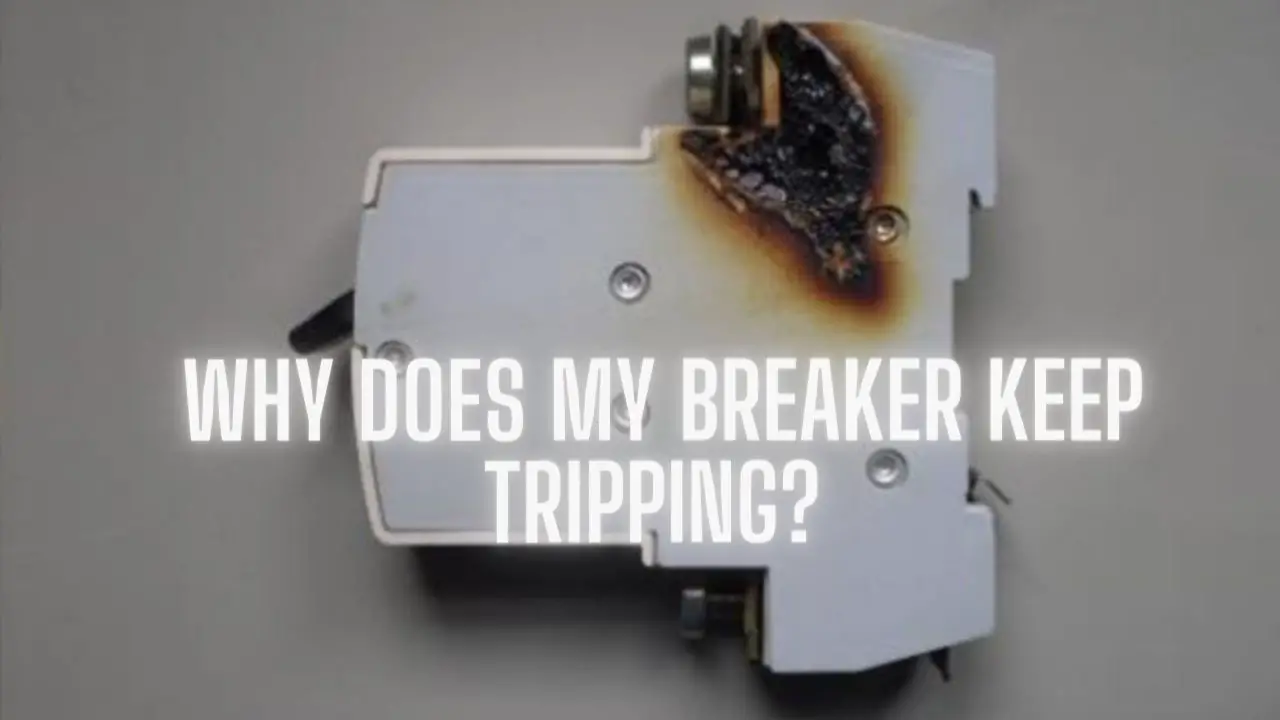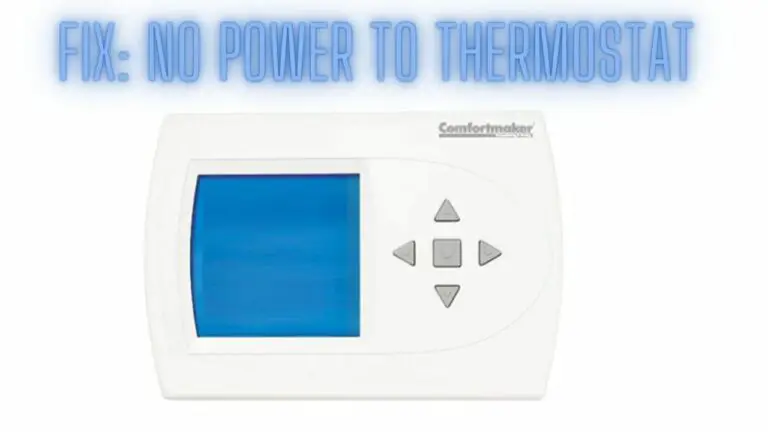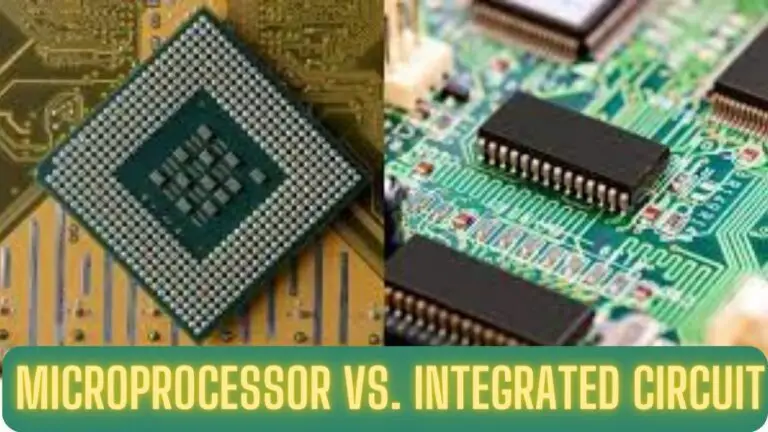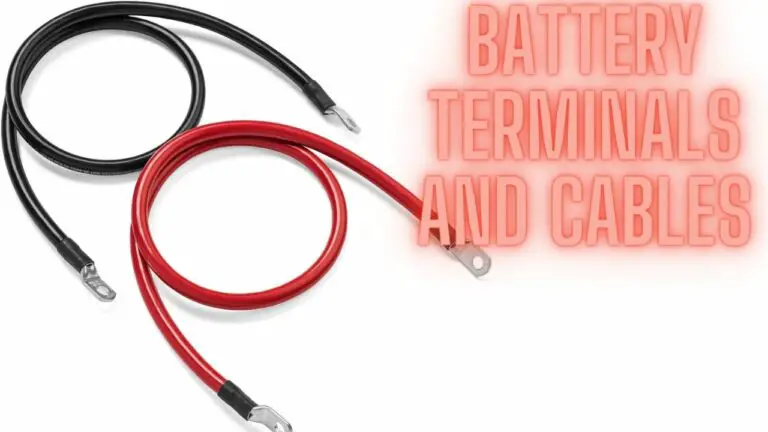Why Does My Breaker Keep Tripping? Common Causes and Solutions
Introduction
Circuit breakers play a crucial role in protecting electrical systems from overloads, short circuits, and other potentially hazardous conditions. However, when a breaker keeps tripping repeatedly, it can be frustrating and concerning. Understanding why your breaker keeps tripping is essential for ensuring the safety and reliability of your electrical system.
In this guide, we will explore the common reasons behind tripped breakers and provide practical solutions for addressing the underlying issues. Whether you’re experiencing occasional nuisance trips or frequent interruptions to your electrical supply, this guide will help you diagnose the problem and take appropriate action to prevent future occurrences.
By gaining a deeper understanding of circuit breakers and the factors that can cause them to trip, you’ll be better equipped to troubleshoot electrical issues effectively and maintain a safe and functional electrical system in your home or workplace.
Let’s delve into the various causes of tripped breakers and learn how to resolve them efficiently, ensuring uninterrupted power supply and peace of mind.
Understanding Circuit Breakers
Circuit breakers serve as crucial components in electrical systems, safeguarding against overloads, short circuits, and other potentially dangerous conditions. Understanding how circuit breakers work is essential for diagnosing and addressing issues related to tripped breakers. Here’s an overview of the fundamentals:
- Purpose of Circuit Breakers:
- Circuit breakers are designed to protect electrical circuits and devices from damage caused by excessive current flow.
- They automatically interrupt the flow of electricity when an overload or fault occurs, preventing overheating and potential fire hazards.
- Operating Principle:
- Circuit breakers consist of a switch mechanism and a trip mechanism.
- Under normal conditions, the switch allows current to flow through the circuit uninterrupted.
- When an abnormal condition such as an overload or short circuit occurs, the trip mechanism detects the excessive current and triggers the switch to open, interrupting the circuit.
- Types of Circuit Breakers:
- Thermal Circuit Breakers: These breakers use a bimetallic strip that expands when heated by excessive current, causing the switch to trip.
- Magnetic Circuit Breakers: These breakers respond to sudden spikes in current by using an electromagnet to trip the switch.
- Hydraulic-Magnetic Circuit Breakers: These breakers combine the principles of thermal and magnetic circuit breakers for enhanced reliability and performance.
- Trip Characteristics:
- Circuit breakers are designed with specific trip characteristics to respond to different types of faults.
- Instantaneous Trip: Activates immediately in response to a sudden surge of current, such as a short circuit.
- Inverse Time Trip: Delays activation to allow for temporary overloads but trips faster as the overload becomes more severe.
- Ground Fault Trip: Specifically designed to detect ground faults and provide additional protection against electrical shocks.
- Resetting Circuit Breakers:
- After tripping, circuit breakers must be manually or automatically reset to restore power to the circuit.
- Manual reset breakers require the user to physically toggle the switch back to the “on” position.
- Automatic reset breakers automatically attempt to restore power after a brief delay, but may indicate a persistent fault if they trip repeatedly.
Understanding the principles of circuit breakers and their various characteristics is crucial for diagnosing and resolving issues related to tripped breakers. By familiarizing yourself with how circuit breakers operate, you’ll be better equipped to maintain a safe and reliable electrical system in your home or workplace.
Common Causes of Tripped Breakers
Tripped circuit breakers can occur due to various factors, ranging from temporary overloads to more serious electrical faults. Understanding the common causes of tripped breakers is essential for diagnosing and addressing electrical issues effectively. Here are some of the most frequent reasons why circuit breakers trip:
- Overloaded Circuit:
- An overloaded circuit occurs when the electrical load exceeds the circuit’s capacity.
- Common causes include connecting too many devices to a single circuit or operating high-power appliances simultaneously.
- Overloaded circuits can lead to overheating and pose a fire hazard, prompting the circuit breaker to trip to prevent damage.
- Short Circuit:
- A short circuit occurs when a hot wire comes into direct contact with a neutral wire or ground wire, bypassing the load.
- This results in a sudden surge of current, causing the circuit breaker to trip rapidly to prevent electrical damage and fire.
- Short circuits are often caused by damaged insulation, faulty wiring, or loose connections.
- Ground Fault:
- A ground fault occurs when a hot wire comes into contact with a grounded surface or conductor.
- Ground faults can lead to electric shocks and pose a serious safety hazard.
- Ground fault circuit interrupters (GFCIs) are designed to detect ground faults and trip the circuit to prevent electrical accidents.
- Arc Fault:
- An arc fault occurs when electrical current flows through an unintended path, such as damaged or deteriorated wiring.
- Arc faults can generate high temperatures and sparks, posing a fire hazard.
- Arc fault circuit interrupters (AFCIs) are designed to detect arc faults and trip the circuit to mitigate the risk of fire.
- Aging Breaker:
- Circuit breakers can wear out over time due to mechanical stress, heat, and other factors.
- Aging breakers may become less reliable in tripping at the appropriate thresholds, leading to nuisance trips or failure to trip during faults.
- Faulty Appliance or Equipment:
- A malfunctioning appliance or electrical device can cause a circuit breaker to trip.
- Common culprits include appliances with damaged cords, shorted components, or internal faults.
- Disconnecting the faulty appliance or equipment can help isolate the source of the problem.
- Weather Conditions:
- Extreme weather events such as lightning storms or power surges can cause circuit breakers to trip.
- Lightning strikes or power surges can introduce sudden spikes in electrical current, triggering the circuit breaker’s protective mechanism.
Understanding these common causes of tripped breakers is essential for identifying and addressing electrical issues effectively. By taking appropriate measures to address the underlying causes, you can maintain a safe and reliable electrical system in your home or workplace.
Troubleshooting Steps
When a circuit breaker trips, it’s important to identify the underlying cause and take appropriate action to prevent it from recurring. Here are some troubleshooting steps to help you diagnose and resolve issues related to tripped breakers:
- Identify the Affected Circuit:
- Determine which circuit breaker has tripped by checking the position of the tripped switch in the electrical panel.
- Label the circuit breaker for future reference and to easily identify the affected circuit.
- Unplug or Disconnect Appliances:
- Unplug or turn off all appliances and electrical devices connected to the affected circuit.
- This helps isolate the source of the problem and prevents further overloading of the circuit when power is restored.
- Check for Overloaded Circuits:
- Assess the electrical load on the circuit to determine if it is overloaded.
- Verify that the total wattage of connected devices does not exceed the circuit’s ampere rating.
- If the circuit is overloaded, redistribute the load by unplugging or moving some devices to other circuits.
- Inspect for Short Circuits or Ground Faults:
- Visually inspect electrical outlets, switches, and devices for signs of damage, such as frayed wires or scorch marks.
- Use a multimeter or circuit tester to check for short circuits or ground faults in the wiring.
- Look for any exposed wires or loose connections that may be causing an electrical fault.
- Test Breaker Functionality:
- Manually reset the tripped circuit breaker by toggling the switch to the “off” position and then back to the “on” position.
- Observe whether the breaker trips immediately upon resetting, which may indicate a persistent fault.
- Test the functionality of the breaker by intentionally overloading the circuit with a known load to see if it trips at the expected threshold.
- Evaluate Electrical Wiring:
- Inspect the wiring connected to the affected circuit for signs of damage, deterioration, or improper installation.
- Check for loose connections, corroded terminals, or damaged insulation that could be contributing to the problem.
- Consider hiring a licensed electrician to perform a comprehensive inspection of the wiring if necessary.
- Address Identified Issues:
- Repair or replace any damaged wiring, outlets, switches, or appliances identified during the troubleshooting process.
- Install additional circuit protection devices such as AFCIs or GFCIs to enhance electrical safety and prevent future faults.
- Consider upgrading the electrical system or adding dedicated circuits for high-power appliances to reduce the risk of overloading.
- Monitor for Recurring Issues:
- After addressing the identified issues, monitor the affected circuit for any recurring problems or signs of malfunction.
- Keep track of any additional tripped breakers and investigate promptly to prevent potential safety hazards.
By following these troubleshooting steps, you can effectively diagnose and resolve issues related to tripped breakers, ensuring the safety and reliability of your electrical system. If you encounter any complex or persistent problems, don’t hesitate to seek assistance from a qualified electrician to ensure proper resolution and compliance with electrical codes and regulations.
Preventive Measures for Tripped Breakers
Taking proactive steps to prevent circuit breakers from tripping can help maintain a safe and reliable electrical system in your home or workplace. Here are some preventive measures to consider:
- Distribute Electrical Load:
- Avoid overloading circuits by distributing electrical loads evenly across multiple circuits.
- Use dedicated circuits for high-power appliances such as refrigerators, air conditioners, and space heaters to prevent overloads.
- Upgrade Electrical Wiring:
- Upgrade outdated or inadequate electrical wiring to accommodate modern power demands.
- Replace old knob-and-tube wiring or aluminum wiring with safer and more durable copper wiring.
- Install larger gauge wiring for circuits with heavy loads to reduce voltage drop and minimize the risk of overheating.
- Use AFCI and GFCI Breakers:
- Install arc fault circuit interrupters (AFCIs) in bedrooms, living rooms, and other areas to detect and mitigate the risk of arc faults.
- Use ground fault circuit interrupters (GFCIs) in kitchens, bathrooms, and outdoor areas to protect against electrical shocks and ground faults.
- Schedule Regular Maintenance:
- Conduct routine inspections and maintenance of electrical systems to identify potential issues before they lead to tripped breakers.
- Check electrical panels, wiring, outlets, and switches for signs of damage, wear, or corrosion.
- Tighten loose connections and replace damaged components promptly to prevent electrical faults.
- Replace Aging Breakers:
- Replace old or malfunctioning circuit breakers with newer, more reliable models to ensure proper protection.
- Upgrade to circuit breakers with advanced features such as AFCI, GFCI, and dual-function protection for enhanced safety and performance.
- Reduce Electrical Consumption:
- Unplug or turn off unnecessary appliances and devices when not in use to reduce electrical consumption.
- Use energy-efficient appliances and lighting to lower overall power demand and minimize the risk of overloading circuits.
- Install Surge Protection Devices:
- Install surge protectors or whole-house surge protection devices to safeguard against power surges caused by lightning strikes, utility grid fluctuations, or appliance cycling.
- Protect sensitive electronics and equipment from damage and ensure uninterrupted power supply during transient voltage spikes.
- Educate Household Members:
- Educate household members on electrical safety practices, including the proper use of electrical devices and appliances.
- Teach children to avoid overloading outlets, using damaged cords, or tampering with electrical equipment to prevent accidents and injuries.
By implementing these preventive measures, you can minimize the risk of tripped breakers and ensure the safety and reliability of your electrical system. Regular maintenance, upgrades, and adherence to safety guidelines are essential for preventing electrical faults and maintaining a secure environment for your family or occupants.
When to Call a Professional
Knowing when to call a professional electrician is crucial for ensuring the safety and proper functioning of your electrical system. Here are some situations where it’s advisable to seek assistance from a qualified professional:
- Repeated Tripped Breakers: If your circuit breakers continue to trip despite troubleshooting efforts, it may indicate an underlying electrical problem that requires professional diagnosis and repair.
- Electrical Shocks: Experiencing electrical shocks when using appliances or touching electrical outlets is a sign of a serious safety hazard. Immediately disconnect power to the affected circuit and contact an electrician for inspection and repair.
- Burning Smell or Smoke: The presence of a burning smell or smoke originating from electrical outlets, switches, or appliances indicates a potential fire hazard. Turn off the power to the affected area and evacuate the premises, then call emergency services and a licensed electrician.
- Flickering Lights: Persistent flickering or dimming of lights, especially when multiple appliances are in use, may indicate an overloaded circuit or loose wiring. A professional electrician can assess the situation and recommend appropriate solutions.
- Visible Damage to Wiring: If you notice exposed wires, frayed insulation, or other visible damage to electrical wiring, it’s essential to have it inspected and repaired by a qualified electrician to prevent electrical faults or fire hazards.
- Electrical Code Violations: If your home’s electrical system is not up to code or if you’re planning to undertake electrical renovations or upgrades, it’s advisable to consult with a licensed electrician to ensure compliance with safety standards and regulations.
- Water Damage: Water infiltration into electrical components or wiring poses a serious risk of electrical shock and equipment damage. If you suspect water damage or encounter electrical issues after flooding or water leaks, contact a professional electrician immediately.
- Old or Outdated Wiring: Homes with aging electrical systems, outdated wiring, or insufficient capacity may be at higher risk of electrical problems. A professional electrician can assess the condition of your wiring and recommend necessary upgrades or replacements to improve safety and reliability.
- Installation of New Circuits or Appliances: When adding new circuits, appliances, or electrical fixtures to your home, it’s essential to ensure proper installation and compliance with electrical codes. A licensed electrician can handle the installation safely and effectively.
- Safety Inspections: Regular safety inspections by a qualified electrician can help identify potential hazards, ensure compliance with electrical codes, and provide peace of mind regarding the safety of your electrical system.
In summary, if you encounter any signs of electrical problems or safety concerns in your home, it’s best to err on the side of caution and consult with a professional electrician. Electrical issues can pose serious risks to life and property, so prompt action and expert assistance are essential for ensuring a safe and reliable electrical system.
FAQS
Why does my circuit breaker keep tripping?
Circuit breakers trip to protect your electrical system from overloads, short circuits, or ground faults. When the current exceeds the safe limit or there’s a fault in the circuit, the breaker trips to prevent damage or fires.
How do I reset a tripped circuit breaker?
To reset a tripped circuit breaker, locate the tripped breaker in your electrical panel and move it firmly to the “off” position and then back to the “on” position. This should restore power to the affected circuit.
Is it safe to keep resetting a tripped circuit breaker?
It’s safe to reset a tripped breaker occasionally. However, if it trips frequently, it’s a sign of an underlying issue that needs to be addressed. Repeatedly resetting a breaker without addressing the root cause can lead to electrical hazards.
What should I do if the breaker keeps tripping after a reset?
If the breaker continues to trip after resetting, it indicates an ongoing problem. First, unplug or disconnect devices on that circuit to reduce the load. Then, investigate for possible causes like overloaded circuits or damaged wiring. If you can’t identify or fix the issue, consult an electrician.
Can weather affect circuit breaker trips?
Yes, weather-related factors like lightning strikes, power surges during storms, or even extreme temperature fluctuations can cause circuit breakers to trip. Surge protectors and regular maintenance can help mitigate these issues.
What is an AFCI breaker, and why does it trip?
An AFCI (Arc Fault Circuit Interrupter) breaker is designed to detect abnormal electrical arcing that could cause fires. It may trip if it detects such arcing, often due to damaged wiring or faulty devices.
What is a GFCI breaker, and why does it trip?
A GFCI (Ground Fault Circuit Interrupter) breaker is designed to protect against ground faults, such as current leakage to the ground. It may trip if it detects a ground fault, typically caused by damaged wiring or faulty appliances.
Can an overloaded circuit cause a fire if the breaker doesn’t trip?
Yes, an overloaded circuit can generate excessive heat, leading to electrical fires if the breaker fails to trip. Circuit breakers are essential safety devices that help prevent such incidents.
Why does a breaker trip when I turn on a specific appliance?
If a breaker trips when you turn on a specific appliance, it may indicate that the appliance is drawing too much current or has a short circuit. Unplug the appliance and have it inspected or repaired.
Can I increase the amperage of a circuit breaker to prevent tripping?
It’s not recommended to increase the amperage of a circuit breaker beyond what the wiring and components are rated for. Doing so can create a fire hazard. Instead, consider redistributing loads or adding new circuits where necessary.
How often should I have my electrical system inspected by a professional?
It’s a good practice to have your electrical system inspected by a qualified electrician every few years or if you experience frequent breaker trips, unusual electrical behavior, or issues like flickering lights.
Conclusion
A circuit breaker tripping is often a protective response to electrical issues within your home’s electrical system. While it can be a temporary inconvenience, it’s a crucial safety feature that prevents electrical fires and hazards. Understanding the common causes and implementing the appropriate solutions can help you maintain a safe and reliable electrical system. If you’re unsure about the cause of frequent breaker trips or need assistance, consult a qualified electrician to ensure your electrical system’s safety and functionality.







